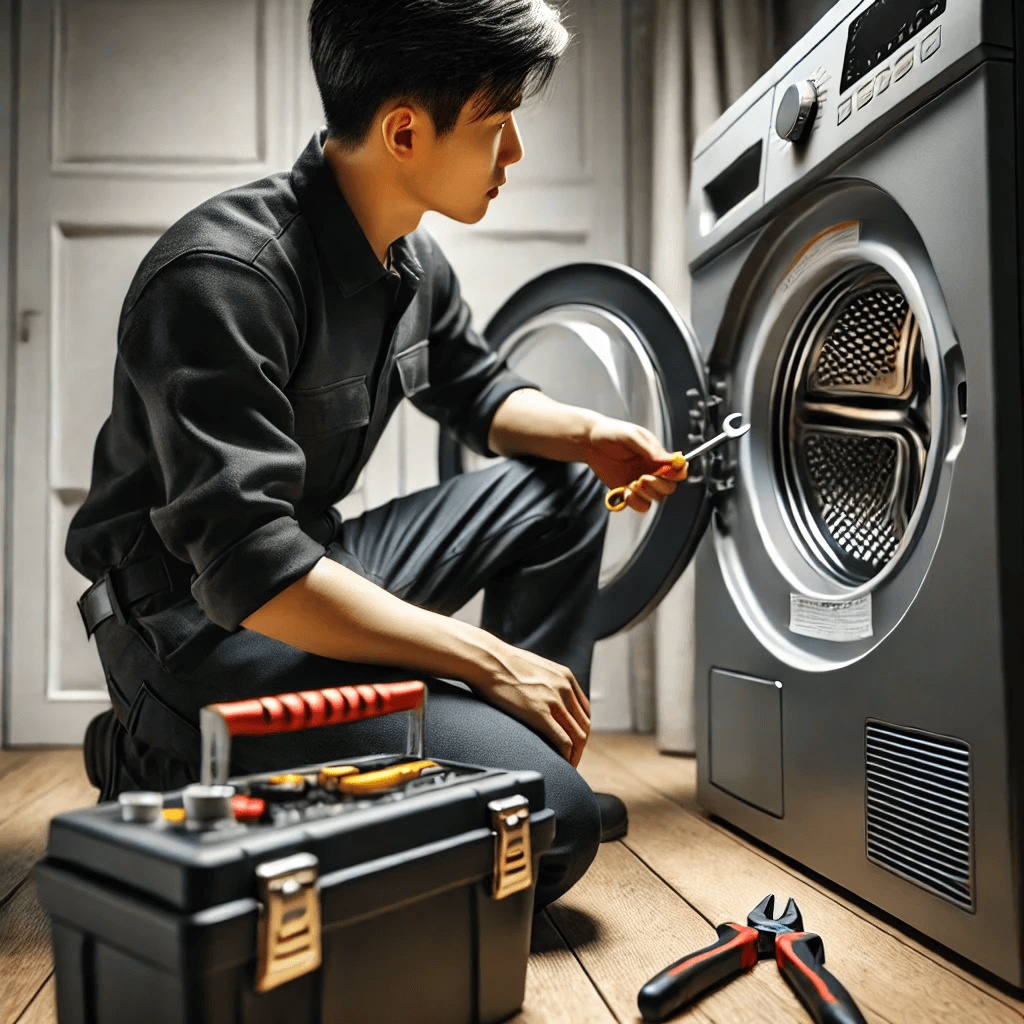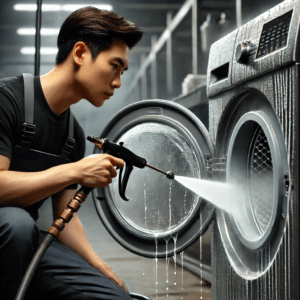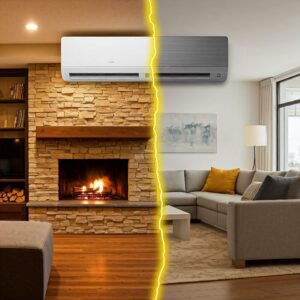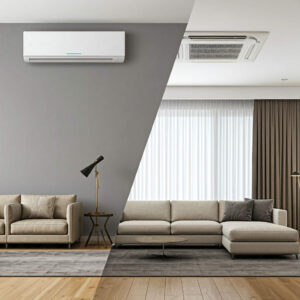You toss in a load of laundry, set the dryer to your usual cycle, and head off to do something else. When you return, instead of warm, fluffy clothes, you’re greeted by damp fabrics that are nowhere near dry. Frustrating, right? If you’ve found yourself asking, “Why is my dryer not drying?”—you’re not alone. This issue is surprisingly common, and the reasons behind it can range from minor to major. The good news? Many causes are easily fixable.
In this blog, we’ll explore some of the most common reasons your dryer might not be doing its job and what you can do about it. Let’s dive in and help you get back to dry clothes in no time!
- The Lint Trap Is Clogged
- The Dryer Vent Is Blocked
- The Dryer Isn’t Getting Hot
- Overloading the Dryer
- The Clothes Are Too Wet
- A Faulty Moisture Sensor
- The Dryer Belt Is Worn or Broken
- The Drive Motor Is Failing
- The Power Source Is Weak
- Conclusion
1. The Lint Trap Is Clogged
One of the most frequent culprits behind a dryer that isn’t drying is a clogged lint trap. That little screen you (hopefully) pull out after every load catches lint and small fibers from your clothes. Over time, this can build up and block the proper airflow, making your dryer work harder and less efficiently.
Why This Happens:
Dryers work by circulating warm air around your clothes. If the lint trap is clogged, the airflow becomes restricted, and your clothes won’t dry as efficiently. Even if you’re cleaning it regularly, small lint particles can sometimes sneak through and clog the vent.
What You Can Do:
Check your lint trap after every load. If it’s filled with lint, give it a quick clean. If you notice your dryer is still struggling, it might be time to clean the dryer vent itself. This task can sometimes require professional help if the venting system is long or difficult to access, but it’s a simple fix for shorter vents.
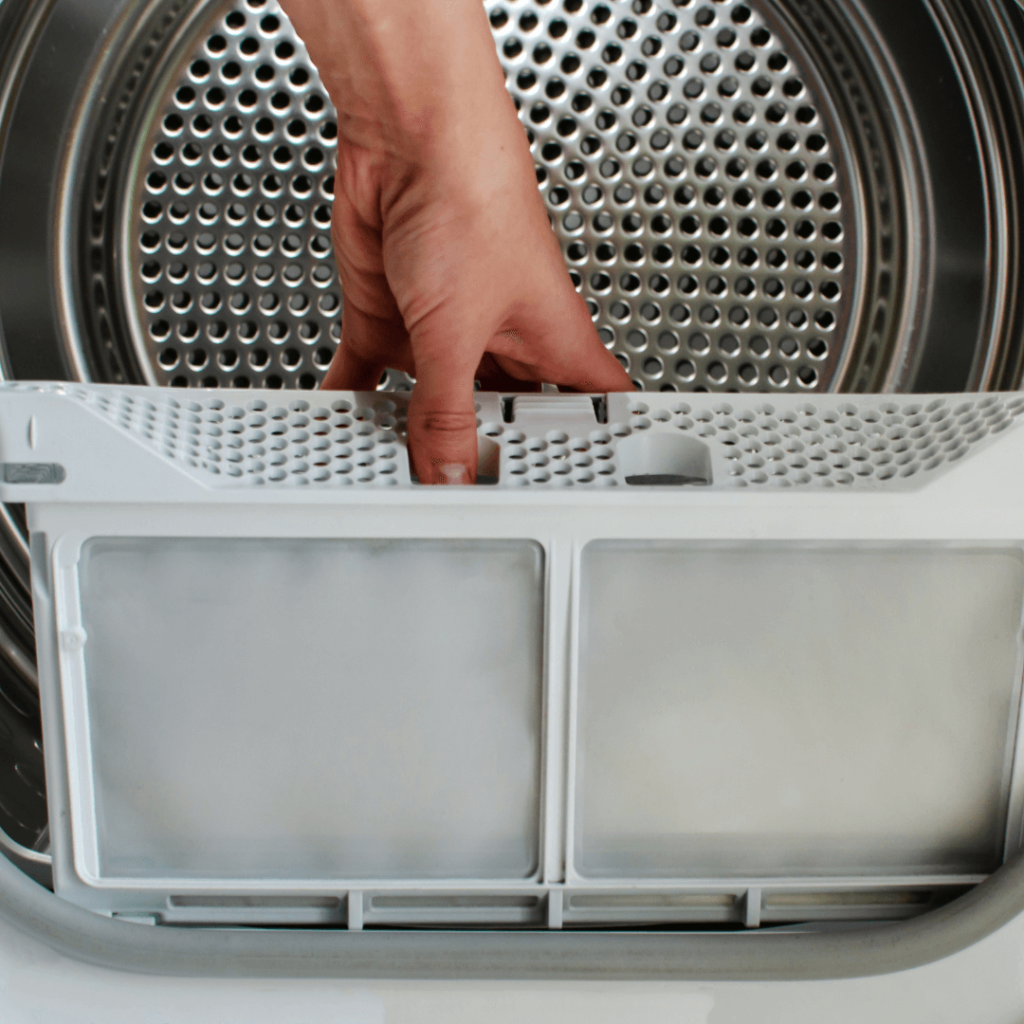
2. The Dryer Vent Is Blocked
If your lint trap is clean, the next logical step is to check the dryer vent. The vent, which is the tube that carries the hot, moist air outside, can also become blocked by lint, dirt, or even small animals looking for a cozy nest. When this happens, your dryer can’t expel hot air properly, leaving your clothes damp and extending drying times.
Why This Happens:
Over time, lint and debris can accumulate in the vent. The more buildup there is, the less efficiently air can flow through. This causes the dryer to overheat, which can trigger safety sensors to shut off the heat, leaving you with a cold and damp load of laundry.
What You Can Do:
You’ll want to unplug your dryer and disconnect the vent to check for any blockages. A vacuum can help you remove any visible lint buildup. For longer vents, you can buy a vent-cleaning kit or call in a professional. Keeping your vent clear not only helps with drying but also reduces the risk of a house fire.

3. The Dryer Isn’t Getting Hot
Sometimes, the issue isn’t airflow, but the lack of heat itself. If your dryer is tumbling but not producing heat, the drying process becomes a never-ending cycle.
Why This Happens:
The heating element in your dryer could be broken, preventing it from reaching the temperature needed to dry clothes. This can happen over time due to regular wear and tear. Alternatively, the thermal fuse may have blown, which is designed to stop the dryer from overheating but also halts heat production if triggered.
What You Can Do:
First, check the settings. Ensure you haven’t accidentally set the dryer to “air dry” or a low-heat setting. If everything seems fine but there’s no heat, the heating element or thermal fuse might need replacing. In this case, it’s best to consult a professional technician to assess and replace the necessary parts.
4. Overloading the Dryer
Believe it or not, overloading your dryer can prevent it from doing its job properly. While it’s tempting to stuff in as many clothes as possible to save time, this can actually have the opposite effect.
Why This Happens:
Dryers need space to allow hot air to circulate around your clothes. When it’s packed too full, there’s not enough room for air to flow, leading to uneven drying. The result? Some clothes come out dry, while others are still damp.
What You Can Do:
Make sure you’re loading your dryer properly. Leave enough space for air to circulate. If you’re unsure, a good rule of thumb is to fill the drum about two-thirds full. If your laundry load is larger than that, consider splitting it into two smaller loads.
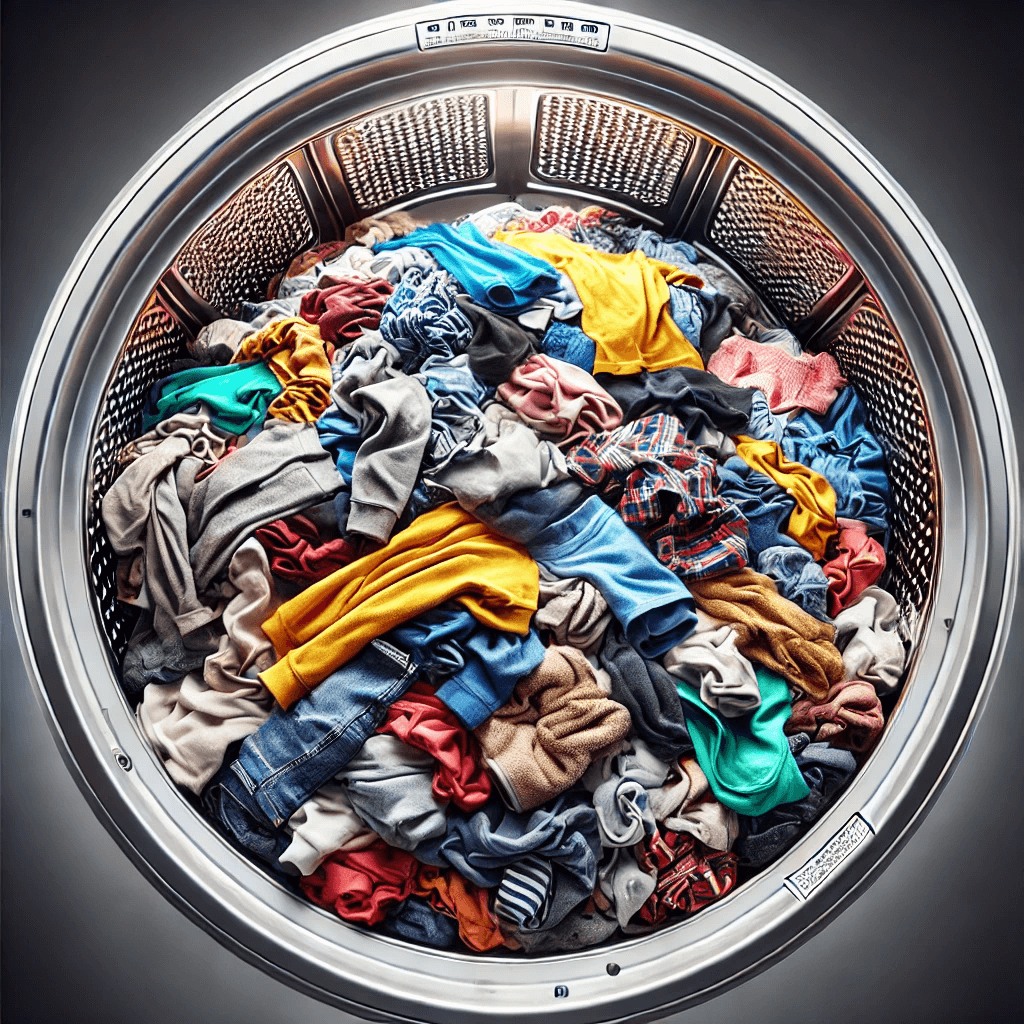
5. The Clothes Are Too Wet
Your dryer can only do so much if your clothes are soaking wet when you put them in. A washer that isn’t spinning correctly might leave too much water in your clothes, making it difficult for the dryer to dry them efficiently.
Why This Happens:
When your washing machine isn’t spinning properly, it fails to remove enough water from the clothes during the spin cycle. This puts extra strain on your dryer, which has to work harder and longer to dry the clothes.
What You Can Do:
Check your washing machine’s spin cycle settings. If your clothes are consistently coming out too wet, you may need to troubleshoot your washer. If the problem is minor, adjusting the spin cycle or redistributing the load might solve it. In more serious cases, you may need to call a repair technician.
6. A Faulty Moisture Sensor
Many modern dryers come with a moisture sensor that detects when clothes are dry and automatically shuts off the machine to save energy. However, if this sensor is faulty, it might misread the moisture levels and stop the cycle prematurely, leaving your clothes damp.
Why This Happens:
Over time, moisture sensors can become coated with dryer sheets, lint, or other debris, which interferes with their ability to detect moisture. If the sensor thinks your clothes are dry when they’re not, it will shut off the dryer before the job is done.
What You Can Do:
To fix this, clean the sensor with a damp cloth and mild detergent to remove any buildup. If that doesn’t work, the sensor may be faulty and require replacement. Again, this is a job for a professional technician.
7. The Dryer Belt Is Worn or Broken
The dryer belt is an often-overlooked component that plays a crucial role in drying your clothes. If your dryer is spinning but not drying efficiently, or not spinning at all, the belt may be worn out or broken.
Why This Happens:
Over time, the dryer belt can stretch, become brittle, or snap. When this happens, the drum can no longer spin properly, which impacts how well your dryer can dry clothes. A broken belt usually leads to a complete stop in tumbling, while a worn belt may cause uneven or ineffective drying.
What You Can Do:
Inspect the belt by unplugging your dryer and removing the access panel. If the belt appears worn, cracked, or broken, it will need to be replaced. While this can be a DIY fix if you’re handy with tools, you may also want to hire a professional if you’re not comfortable with appliance repairs.
8. The Drive Motor Is Failing
Another possible issue could be a failing drive motor. The motor is responsible for turning the drum, and if it’s not working correctly, the dryer won’t spin, leaving your clothes damp and unheated.
Why This Happens:
Motors wear out over time due to regular use, and when this happens, they may begin to slow down or stop altogether. If you hear strange noises, like grinding or squealing, while your dryer is running, it could be a sign that the motor is on its last legs.
What You Can Do:
A failing drive motor usually requires replacement by a professional. If your dryer is older, you might want to weigh the cost of repair against replacing the entire machine.
9. The Power Source Is Weak
Sometimes, the problem isn’t the dryer itself but the power source. A dryer needs adequate voltage to generate the heat necessary to dry clothes. If the electrical supply is insufficient, the dryer won’t function properly.
Why This Happens:
If the outlet or circuit breaker is providing less power than needed, your dryer might run without producing heat. This could be due to a tripped circuit breaker or a problem with the power cord.
What You Can Do:
Check your home’s circuit breaker to ensure everything is in working order. If the circuit breaker has tripped, reset it and see if that resolves the issue. You may also want to test the outlet with another appliance to confirm it’s providing enough power.
Conclusion
A dryer that isn’t drying can be a frustrating experience, especially when you’re in a hurry. Fortunately, many of the common issues are easy to troubleshoot and fix, whether it’s as simple as cleaning the lint trap or as involved as replacing the drive motor.
If you’ve gone through this list and your dryer is still not drying, it might be time to call in a professional technician. Whether it’s a minor fix or a major repair, addressing the problem early can save you time, money, and frustration down the road.
In the end, regular maintenance is key to keeping your dryer running smoothly. Stay on top of lint trap cleaning, vent maintenance, and other small fixes, and you’ll likely avoid the dreaded “dryer not drying” scenario altogether!
For more maintenance and troubleshooting guides, read our blog.
You May Also Like
- How to Choose the Right Refrigerator Size for Your Home?
- Why Is My Washing Machine Not Draining Water?
- Why You Should Deep Clean Your Washer Dryer Once a Year?
- Inverter or Non-Inverter Air Conditioner: Which To Buy?
- What is the Right Air Conditioner Horsepower for Your Home?
- 5 Tips to Buy an Air Conditioner in Malaysia

